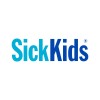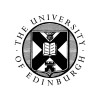
Echocardiography in Men With Erectile Dysfunction
Erectile DysfunctionCardiovascular Diseases1 moreCardiovascular disease is the leading cause of morbidity and mortality in the world. To curb disease development, there is, therefore, a need to identify more people at increased risk. This can be done by advanced echocardiography, where the exact contraction pattern and dimensions of the heart are measured. One group of patients who are already considered to be at increased risk for later development of heart disease are men with erectile dysfunction. The investigators goal is to study the early detection of cardiac dysfunction in men with erectile dysfunction using both conventional and advanced echocardiography to analyze the possibility of preventing serious cardiovascular disease.

Continued Access Protocol for the Evaluation of the OPTIMIZER Smart System
Heart FailureCongestive Heart Failure2 moreThis is a multicenter, prospective, single-arm Continued Access study of the Optimizer Smart System with CCM therapy.

Cell Therapy for Coronary Heart Disease
Coronary Artery DiseaseImpaired contractile function after a heart attack and due to coronary heart disease is a major cause of "heart failure" limiting quality of life and prognosis, which cannot be prevented even with optimal standard therapy. The aim of the current trial is to investigate whether infusion of progenitor cells into the coronary artery supplying the most dyskinetic left ventricular area may improve left ventricular contractile function, compared to no cell infusion in the control group, in patients with old (>= 3 months) myocardial infarction.

Effectiveness of a Motivated, Action-based Intervention on Health Outcomes of Coronary Heart Disease...
Coronary Heart DiseaseCoronary heart disease (CHD), the major group of cardiovascular disorders, is the leading cause of cardiac-associated mortality, causing >9 million death in 2016. American Heart Association (AHA) and the American College of Cardiology Foundation (ACCF) recognized that lifestyle modification including physical activity is the class one-level recommendation for secondary prevention and risk reduction therapy for patients with CHD. The assessment of physical activity and confidence in performing exercise for patients with CHD will help healthcare professionals to develop and implement the appropriate intervention to enhance patients' confidence in performing exercise and physical activity to promote and maintain their health. With the increasing morbidity and mortality from CHD, especially in low and middle-income countries, secondary prevention including exercise-based cardiac rehabilitation (CR) plays an important role to improve the prognosis of CHD patients. High prevalence of physical inactivity, unhealthy dietary practices, poor control of blood glucose, blood pressure (BP), blood lipid, and body weight (BW) was found among CHD patients in the world as well as in Sri Lanka. Therefore, it is important to design and implement an appropriate intervention to improve the physical activity level, exercise self-efficacy, and cardiovascular risk factors in CHD patients in Sri Lanka. This study aims to develop and examine a culturally specific motivated, action-based intervention for improving physical activity level, exercise self-efficacy, and cardiovascular risk factors of CHD patients in Sri Lanka. The participants will be patients who admitted to the coronary care unit (CCU) and medical wards of the Teaching Hospital Batticaloa, Sri Lanka with CHD for the first time confirmed by electrocardiogram with aged 18 years or above, able to reads and speak Tamil, able to attend clinic follow-up, obtain a medical clearance from a cardiologist to perform the exercise and, able to understand and give informed consent. The medical records of the CHD patients will be reviewed to screen for their eligibility. In addition, the cardiologist of the participants will be consulted for their suitability to perform the exercise of the intervention. The purpose of the study, the data collection procedures, the potential risk and benefits, the maintenance of confidentiality, and the voluntary basis of participation will be clearly explained to the participants, and informed written consent will be obtained before data collection. Ethical approval was obtained from The Joint Chinese University of Hong Kong - New Territories East Cluster Clinical Research Ethics Committee and Ethics Review Committee, Faculty of Health Care-sciences, Eastern University, Sri Lanka. The Statistical Package for Social Science version 22.0 software (SPSS 22.0) will be used to analyze the data and the p-value less than 0.5 will be considered as significant. This study will provide evidence on the effectiveness of a motivated, action-based intervention on the physical activity level, cardiovascular risk factors, and exercise self-efficacy of CHD patients in Sri Lanka. Findings from this study could be useful to promote healthy lifestyle behaviors in CHD patients in a low-resource setting. Furthermore, this study will provide information on which level this intervention could be applied and possible constraints that hinder the outcomes of the results.

Use of Oxandrolone to Promote Growth in Infants With HLHS
Hypoplastic Left HeartCongenital Heart DiseaseThe primary aim of this study is to determine if clinically relevant doses of buccally administered oxandrolone are safe and tolerable in neonates with hypoplastic left heart syndrome (HLHS) or other single right ventricular anomalies who have undergone a Norwood procedure. The secondary aim is to evaluate the efficacy of buccally administered oxandrolone in improving objective indices of growth and nutrition in neonates who have undergone a Norwood procedure.

Exercise Training Strategies for Children With Repaired Tetralogy of Fallot
Tetralogy of FallotCongenital Heart Defects3 moreThe investigators will explore the feasibility and safety of two exercise interventions delivered both in the hospital and in participants' homes. Preteens and adolescents who have had repaired Tetralogy of Fallot (TOF), will be grouped by age and randomly assigned to either an aerobic or strength training exercise program supervised for 12 weeks. An exploratory aim of this study will be to examine changes in fitness level, muscle strength, muscle oxygen extraction and quality of life after the intervention, and compare these measures between groups. At the end of the study, participants and parents will be interviewed to assess their satisfaction and ideas for improvements in the program.

Effects of Urocortins on Forearm Arterial Blood Flow in Healthy Volunteers (Protocol 2)
Vascular DiseaseHeart DiseaseImpairment of the heart's pumping capacity (heart failure) remains a major clinical problem with a poor prognosis and the search for novel treatments remains an important area of research. Urocortins are proteins that appear to increase blood flow and heart pumping activity. There has been particular interest in the role of Urocortins 2 & 3 (subtypes of Urocortins) in heart failure. In this study, we will examine the effects and mechanisms of Urocortins 2 & 3 and the Corticotrophin Releasing Hormone Receptor Type 2 (CRH-R2) receptor (through which urocortins act) on forearm blood flow and release of natural blood clot dissolving factors in the forearm circulation of healthy volunteers. In this study, we will look at the role of the lining of the blood vessel (endothelium) in response to urocortin types 2 and 3. We hypothesise that urocortins 2 & 3 act via the endothelium to cause dilatation of the blood vessels and release of tissue-plasminogen activating factor (blood clot dissolving factor). We also hypothesise that urocortins have a role in maintaining the normal baseline level of blood flow in forearm arteries. In addition to the above, we will also look at the effect of temporarily blocking the effect of urocortins, using a specially designed blocker drug (Astressin 2B). Utilising the well-established technique of 'forearm venous occlusion plethysmography', we will be able to focus on the local effects of urocortins on arterial blood flow in forearm vessels, without affecting this system in the body as a whole.

Multicenter Trial of ECMO in Children With Severe Cardiac Failure Using the Cardiohelp System
Heart FailureCardiogenic Shock2 moreThe goal of this multicenter observational clinical trial is to evaluate the safety and effectiveness of the Cardiohelp System for VA-ECMO in children with cardiac failure. The main question[s] it aims to answer are: What is the safety and effectiveness of the Cardiohelp device for pediatric ECMO? What are the optimal performance specifications of the Cardiohelp device in children? Should the Cardiohelp device be FDA-cleared for children? Children who are receiving the Cardiohelp device will be approached and consented to participate if interested. Participants will undergo a standardized data collection to estimate survival to 30 days and the prevalence of serious adverse events like stroke, bleeding, and hemolysis. Outcomes will be compared to performance goals (PG) derived from the ECMO literature.

Future Innovations in Novel Detection for Atrial Fibrillation (FIND-AF): Pilot Study
Atrial FibrillationHeart Diseases1 moreThe purpose of this study is to trial a new intervention - risk-guided AF screening using an EHR-based risk score and remote ECG monitoring process - and to characterise individuals at elevated predicted AF risk.

The Role of Dexmedetomidine As Myocardial Protection In Pediatric Cyanotic Congenital Heart Disease...
Congenital Heart Disease in ChildrenCardiopulmonary BypassCongenital Heart Diseases (CHD) are one of the most common congenital anomalies. Worldwide, 8 to 9 out of 1000 of children are born with a CHD, of which 25 percent of are cyanotic CHD. In Indonesia, the prevalence is 43.200 out of 4.8 million births annually. The morbidity and mortality of cyanotic CHDs in the National Cardiovascular Center Harapan Kita (NCCHK) are higher than acyanotic CHDs. Open-heart surgery using a cardiopulmonary bypass (CPB) machine temporarily takes over the function of the heart and lung during surgery. However, the use of CPB has several negative effects such myocardial injury, systemic inflammation, and reperfusion injury. Preoperative hypoxia in cyanotic CHD tends to be associated with a higher risk of myocardial injury. Myocardial protection has an important role in attenuating those effects. Generally, we use a cardioplegia solution as myocardial protection, but there are several non-cardioplegia techniques that can be used to enhance myocardial protection during cardiac bypass, such as adding an anesthetic agent. Dexmedetomidine (DEX) is the active dextroisomer of medetomidine, a selective α-2 adrenergic, which has major effects including hypnosis, sedation, and analgesia as well as cardiovascular effects. The sedation is induced by stimulating the α-2 adrenergic receptor in the locus coeruleus (LC) in the pons cerebri. DEX also increases the level of GABA and Galanin and reduces endogenous norepinephrine. The lower level of endogenous norepinephrine decreases the afterload of the ventricles, increases cardiac output, and reduces myocardial injury as a result. Furthermore, the peripheral effects of DEX can reduce myocardial ischemia-reperfusion (MIR) by inhibiting NF-кB pathway activation and reducing the number of proinflammatory cytokines released. Research related to the priming and infusion of DEX during CPB in patients with cyanotic CHDs who are undergoing open-heart surgery is less reported. The aims of this study are to determine the effectiveness of the priming and infusion of DEX during CPB as myocardial protection by using two different doses compared to the control group. The population included in this study is pediatric patients with cyanotic CHD who are undergoing open-heart surgery using CPB and who classified as 6 to 9 in the Aristotle Score.
